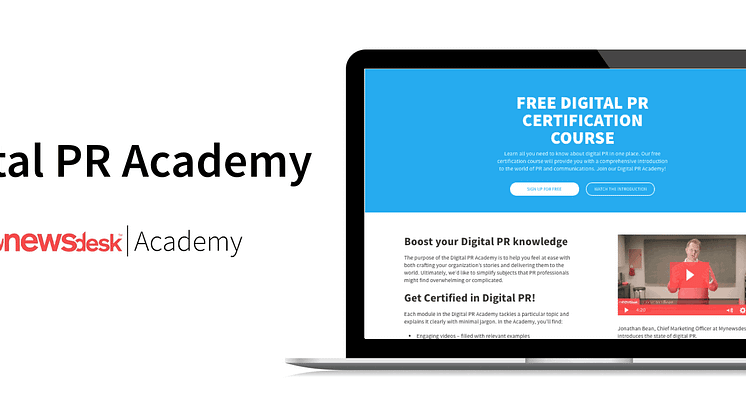
Blog post -
PR Academy | 3 Excellent Examples of PR Storytelling
If you work in PR or communications, we don’t have to tell you your methods of reaching stakeholders and customers has changed dramatically over the last decade. Where once you focused on pitching the media for attention, today you can reach influencers and consumers directly by publishing content—for example, blogs, videos or eBooks—and by engaging through social media.
Yes, traditional media still has the power to convene readers, but savvy PR professionals can build their audiences and maintain interest over time. In fact, the most sophisticated brands primarily operate mini-publishing houses, functioning a lot like media companies. Well-known examples are Red Bull, GE, and Adidas.
Building brand reputation in the digital age
But just because brands can connect with the public directly doesn’t mean it’s easy to do. There are new rules to PR, as well as how to take the first steps toward transforming your organization into a story-driven one. Many businesses are excelling in this new environment: pulling in an engaged audience not by paying for attention, but by earning it. How? By creating fantastic content delivered at the right moment, to the right person.
Great stories draw attention
You’re probably tired of hearing about “brand storytelling”—many of us have overused it in recent years as a way of explaining how companies bypass advertising and traditional PR. So forgive us as we tread on old ground, but we think it’s still an apt phrase, even if we sometimes misuse it.
Real brand storytelling is the ability to find shared interests with your target audience—be it customers, influencers or the public as a whole—and tell stories about those common interests in a way that is engaging, educational, entertaining or useful. What do these stories look like? You’ll soon see the possibilities are nearly endless. Let’s look at some examples:
Mini-case #1: Autodesk’s Redshift
Autodesk makes software for design professionals—from architects and engineers to product designers and video game developers. Yes, Autodesk can pitch stories and earn mentions in the media and trade publications (as they once did), but the company has found a way to be the media rather than pitch the media. Its publication, Redshift, is widely read by the professionals Autodesk hopes to sell its product to.
How do they do it? The company employs a team of journalists to publish the kind of engaging, insightful content that they know their audience seeks out. And by doing so, Autodesk has built a reputation as a leader in each of the industries it serves. The company no longer relies on the media to tell its story because it has now become the media in the markets it serves.

Mini-case #2: HABA “Ask Mali.”
German toymaker HABA hosts a monthly “Ask Mali” blog entry in which children and parents ask the doll named Mali about issues that matter to them, such as “Are dolls only for girls?” and “Which language do HABA dolls speak?” The write-ups are a way for the internal team to share their values and culture, but do so in a way that aligns nicely with the spirit of the business—entertaining children. The company publishes these Q&As, as well as other educational blog posts, videos, and promotions through its social networks.

Mini-case #3: Craft Beer Cellar
Craft Beer Cellar is a New England-based beer retailer in the United States. It hosts a blog, hosts tasting events, and has a huge following on social media considering the hyper-local market it serves. In just six years, the retailer has expanded from one store to 24 locations that span the country.
Scan Craft Beer Cellar’s Facebook pages (it hosts an account for each store) and you’ll see the mix of educational information, fun sharing of others’ content, and an apparent love of beer.
The retailer says its primary goal is to teach people about great beer and to become a trusted source of expertise. ““The consumer right now in a lot of ways is more overwhelmed than ever,” says co-founder Kate Baker. “That’s where we come in. People trust us. It’s important to build that trust.”

Key takeaways to master PR storytelling
As seen from these examples, “stories” come in many forms—whether articles, videos, interactive content, infographics, live events, or social media conversations, to name just a few. What they have in common is they earn attention based on the quality of the content and message.
- Be the media instead of pitch the media.
- Find shared interests with your target audience.
- Publish engaging, insightful content that your audience wants.
- Become a trusted source of expertise.
- Employ or create a writing group.
- Share your values and culture and align it to the spirit of your business.
If you would like to learn more about the art of storytelling in PR, please join our free certification course.







